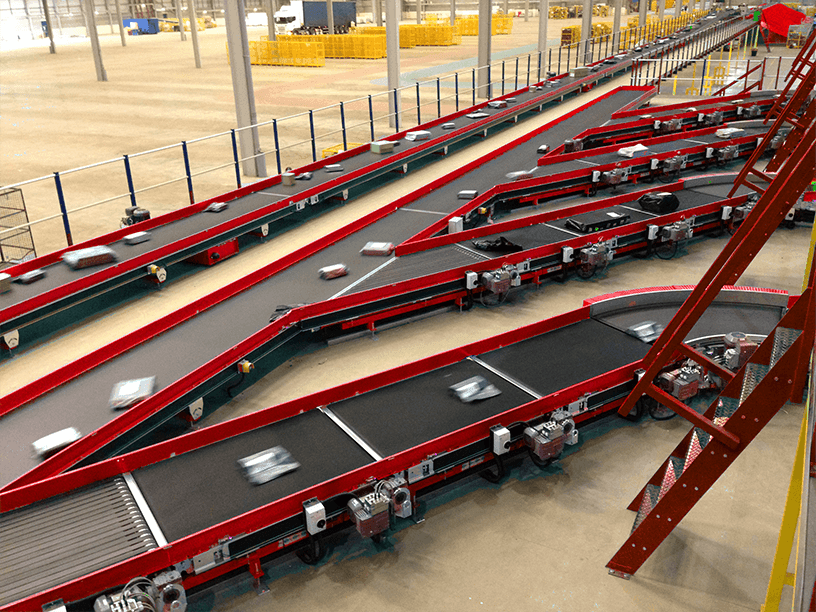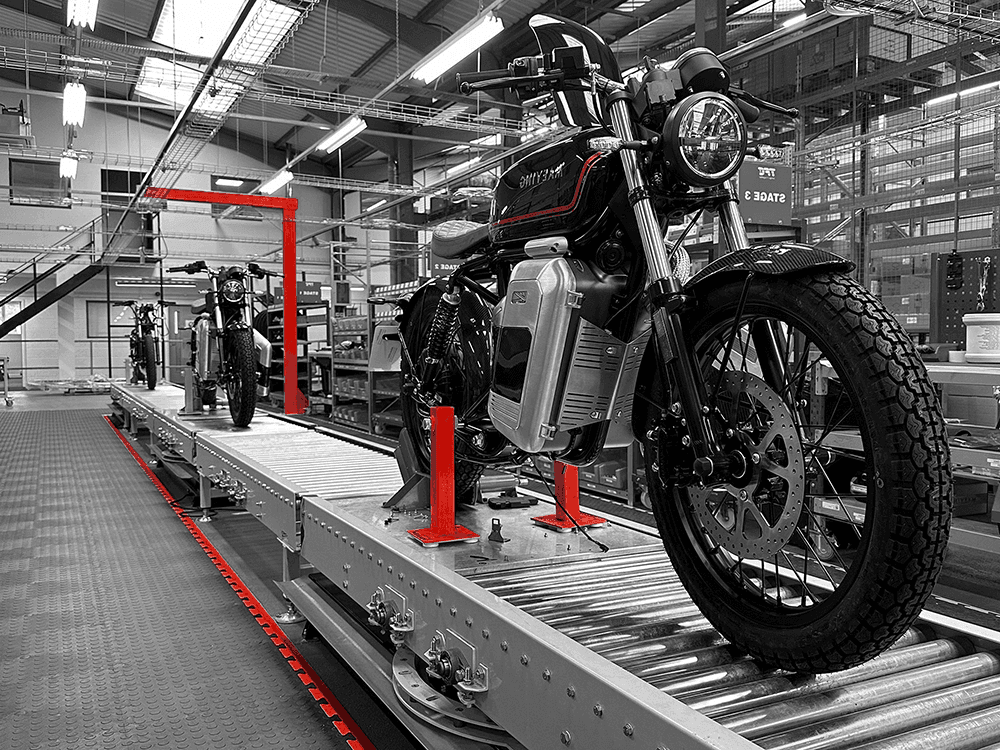Materials Handling – All Industries
In addition to the use of integrated robotics on production lines, robots of varying sizes, shapes, and complexity are frequently deployed for other materials handling tasks, such as transporting goods or components from storage areas to the production line. Additionally, they are often utilised to move finished goods either back to storage until needed, or directly to packing areas for onward shipment.
Some of the most common types of materials handling robotics used in a production facility include Autonomous Mobile Robots (AMRs), which navigate the warehouse transporting goods via totes, pallets, or even entire shelving units. They are highly efficient, agile, and accurate, requiring minimal manual input.
AMRs can also be used in a Goods-to-Person setting where they retrieve and replenish finished goods from a high-density storage structure and transport them to picking stations. This provides faster order fulfilment, optimised use of the available warehouse space, and reduced risk of errors with near-zero manual handling.
Beyond Robotics: Complementary Automation Technologies
To unlock the full potential of automation, robotics can be integrated with other Industry 4.0 technologies, creating highly advanced, intelligent systems. Here are some of the key technologies frequently deployed alongside robotics to enhance operations:
1. Machine Vision Systems – these help robots to accurately and quickly detect, identify, and quality-check products in real-time.
2. Industrial IoT (IIoT) Sensors – advanced sensors are used to collect and transmit data from robots and machines to central monitoring systems to enable predictive maintenance and real-time performance tracking.
3. AI and Machine Learning – evolving at speed, AI and machine learning are integrated technologies that are highly effective at enhancing robotic adaptability. They typically help production line operations by optimising scheduling & demand forecasting, the flow of material, and energy use through intelligent decision-making.
4. Automated Guided Vehicles (AGVs) – AGVs are typically deployed to transport materials and products between workstations or the warehouse. Their autonomous adaptability minimises both the need for human intervention and the risk of injury through manual handling or lifting, which enhances overall safety within the facility.
5. MES and ERP Integration - Manufacturing Execution Systems (MES) link the shop floor with business systems to enable production data to be synchronised with enterprise resource planning (ERP) systems for enhanced visibility, workflow planning, and inventory management.





